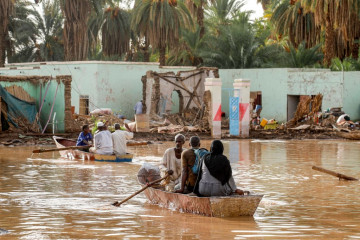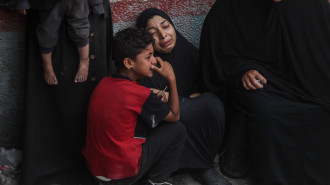

Sudan is no stranger to conflict or climate change, with each exacerbating the toll of the other as a year-long civil war spirals further out of control.
The onset of the rainy season promises even more devastation for a country whose humanitarian needs are already going unmet.
“Sudan is anticipating severe humanitarian challenges during the 2024 rainy season, influenced by conflict and environmental factors,” the Norwegian research group ACAPS emphasised in a June report.
The ACAPS analysis observed that increased precipitation could cause flooding, which would in turn ravage Sudan’s agriculture — a potential humanitarian disaster for a nation on the brink of famine.
ACAPS warned that floods could also contribute to the spread of mosquito-borne diseases like malaria and prevent aid agencies from reaching more remote areas of Sudan, such as White Nile State on the border with South Sudan.
These fears are coming true. On July 28, the United Nations Office for the Coordination of Humanitarian Affairs (OCHA) issued a “flash update” highlighting the “impact of heavy rains and flooding” in Sudan.
The announcement indicated that in Kassala State — on the eastern border with Eritrea — floods had “affected thousands of people, including internally displaced people (IDPs), host communities, and refugees.”
Among them were over 10,000 “newly arrived IDPs” from Sennar State on the south-eastern border with Ethiopia.
“Floodwater reportedly submerged tents and water and sanitation (WASH) facilities, as well as roads,” OCHA reported. “The majority of the affected IDPs have been forced to live in the open on the roadsides, and they do not have access to food, clean drinking water, or safe sanitation facilities — amid heightened concerns of a possible spike in water-borne diseases.”
OCHA documented five deaths from the flooding in Kassala State, three of whom “drowned in the River Gash,” which flows from Eritrea into Sudan. The report also suggested that the situation in the state could grow worse if the level of the Gash River rose further.
On the same day, the International Organization for Migration (IOM) — another arm of the U.N. — provided simultaneous “flash alerts” for locations throughout North Darfur State, on the western borders with Chad and Libya.
In the town of Zamzam, floods “destroyed an estimated 1,018 houses and 816 latrines, while 149 houses were partially damaged.” Heavy downpours have made dozens more houses in other parts of the state uninhabitable.
While floods are worsening the humanitarian crisis in Darfur, they are also causing intermittent closures of the crucial Tine border crossing, which is essential for the flow of humanitarian aid from Chad into Darfur. The New York Times reported on June 26 that rains had closed the border crossing for most of that week.
Even as the rainy season restricts Sudan’s access to humanitarian aid, there was hardly enough to begin with. The International Rescue Committee has described 25 million Sudanese as “in need,” yet the international community has offered to provide only half of the U.N.’s $4.1 billion appeal for donations to support humanitarian aid to Sudan.
The situation is likely to deteriorate further. A May report by the Clingendael Institute, a Dutch think-tank, estimated that as many as 2.5 million Sudanese could die by September 2024 due to the lack of food.
The ACAPS report emphasised that insufficient funding has particularly affected aid agencies’ ability to respond to extreme weather.
“Humanitarian response to the rainy season and floods in Sudan has mostly been reactive,” the research group concluded. “Funding constraints hinder anticipatory actions, forcing the prioritisation of the most affected populations.”
At the same time, the toll of the rainy season has long been known. ACAPS noted that “the worst floods experienced in Sudan in the last century occurred in 2020 and affected over 900,000 people” — an indication of how climate change has fuelled Sudan’s contemporary humanitarian crises. In 2022, floods impacted another 349,000 people across 16 of the country’s 18 states.
Today, the damage is extending beyond Sudan’s borders. On July 17, the U.N. High Commissioner for Refugees (UNHCR) indicated that floods were subsuming roads in South Sudan as 1,600 Sudanese refugees entered the country each day.
“The transit centre was very congested,” one resident of a refugee camp in South Sudan told the UNHCR. “There were a lot of refugees from Sudan, and there were many people from South Sudan who were all crowded there, so life was quite difficult, especially during the rainy season.”
The suffering caused by these floods is due to several factors: extreme weather from climate change and a civil war caused by political conflicts. The most immediate solution, however, is quite simple: money.
On July 19, United States Ambassador to the U.N. Linda Thomas-Greenfield said that of the $2.1 billion the U.N. had received in pledges for humanitarian aid to Sudan, only a quarter had been delivered. That day, she announced that the United States would provide Sudan with another $230 million.
As the rainy season continues, Sudan’s outlook grows ever dimmer. To save millions of lives, the country will need billions of dollars more. Time is running out.




 Follow the Middle East's top stories in English at The New Arab on Google News
Follow the Middle East's top stories in English at The New Arab on Google News


